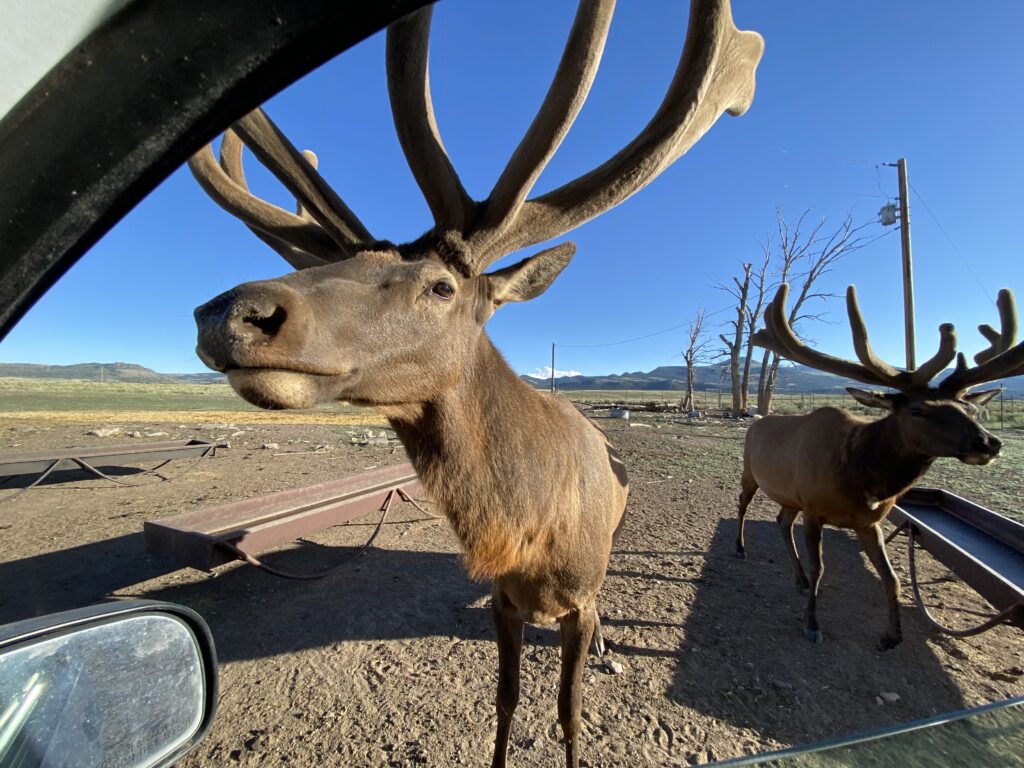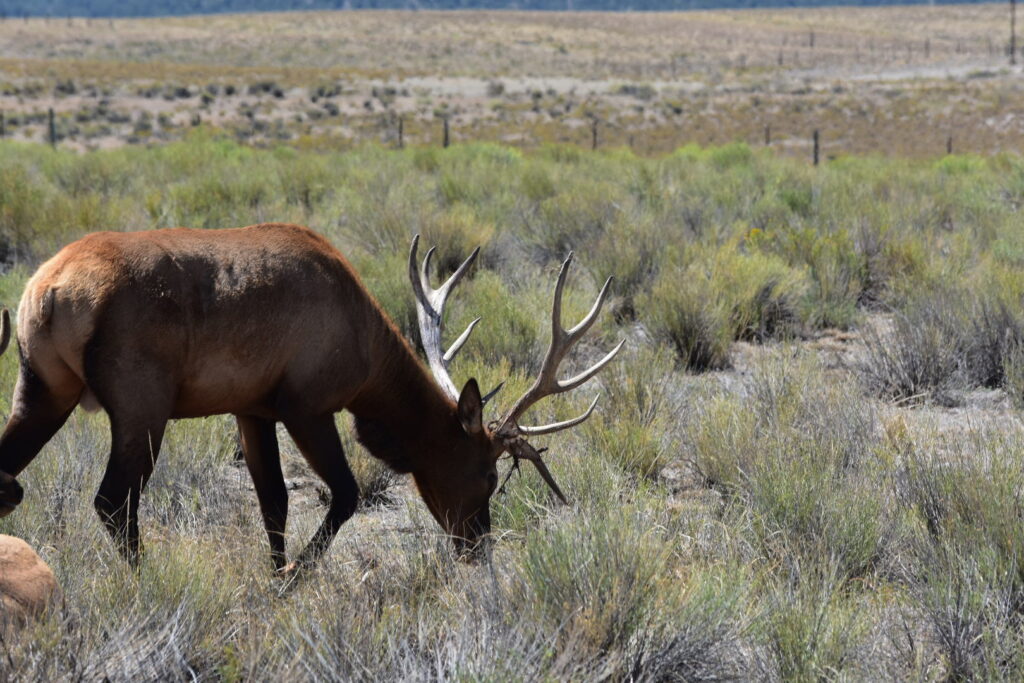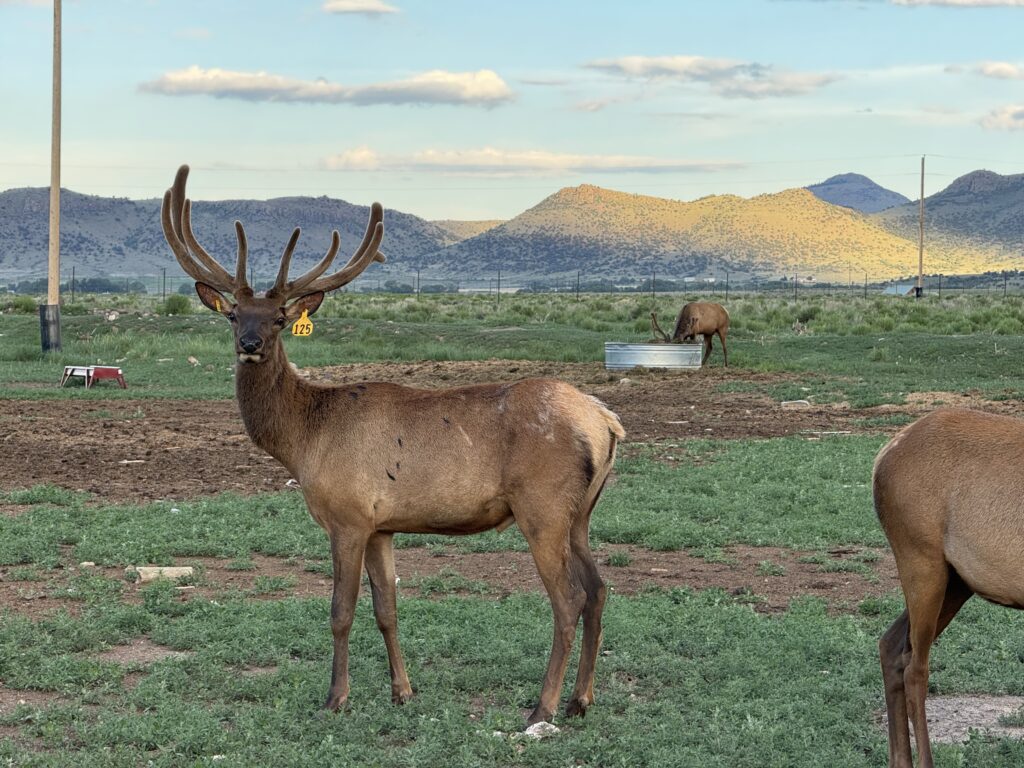ECONOMICS OF ELK:
Elk provide three sources of income – 1) meat, 2) breeding, similar to beef cattle, and 3) bull elk produce antlers or Velvet each year which an be sold. The average 2-year old will produce approximately six pounds of velvet. In general, bulls increase velvet yields annually. Mature bulls (7 to 8 years old) may produce up to 40 pounds of velvet annually. Velvet is a commodity used widely in the Pacific Rim as a primary ingredient in holistic medicines and as a wellness product. Over the past 15 years, value has ranged from $35 to $115 per pound. The domestic market is also growing as more people turn to holistic medicine. Elk velvet is sold via private treaty and through marketing pools, similar to wool pools.
As with other species, breeding stock prices vary widely, One Colorado breeder’s ranch averaged $716 net pre-tax income per breeding age cow. Annual rate of return on investment can equal around 25% (See Elk Profits). That compares to a Western Colorado average of $165 net pre-tax income per breeding age beef cow. Elk meat wholesale prices currently ranges from approximately $4 a pound for burger to $15 a pound for steaks. Currently, most of the elk meat consumed in the U.S. is actually Red Deer imported from New Zealand which wholesales at about $3.00 to $3.50 per pound.
Most elk sold in the U.S. today are used for breeding stock. Markets include live auctions, video auctions and private treaties. There is a national association, North American Elk Breeder Association, which maintains a herd registry, an annual convention and an association journal that carries a breeders directory and advertising.
BREEDING:
The “rut” or breeding season is September to November. Bulls are capable of breeding at 2 years old but the best results are obtained using bulls 3 or older. Most females will cycle at 18 months of age if they weigh over 70% of their expected adult weight. The average reproductive life of a cow elk is 15-18 years. The gestation period for elk is approximately 255 days. Calves are born in May and June and are spotted for camouflage. Elk have relatively few birthing problems an the calves are much less susceptible to scours an other health problems than beef calves due to the warmer weather and natural immunities.
Mature bulls average 800 to 1,100 pounds and stand 5’ to 5’6″ at the shoulder. Mature cows average 550 to 650 pounds and stand 4’ to 5’ at the shoulder. Elk dress out at approximately 60 percent of live weight.
FEEDING:
Elk are predominantly grazers and are efficient converters of nutrients. They eat most upland grasses and legumes. In general, two to three elk can be fed on the pasture necessary for one beef cow. Elk will consume grains (corn, oats). They can consume up to 20 percent of their diet in browse ( brush, shrubbery). Most elk ranchers supplement their elk’s diet with grain (oats, corn) and a vitamin and mineral enriched pellet.
HERD HEALTH:
While elk are very hardy animals and less susceptible to pneumonia than cattle, but like cattle they are susceptible to tuberculosis and Brucellosis. Most state have stringent testing requirements. In Colorado the Colorado Department of Agriculture licenses all facilities and regulates the movement of animals. All animals must be tested for tuberculosis prior to being moved throughout Colorado. All animals entering the state must have tested negative for tuberculosis and Brucellosis. Animals coming into Colorado must also pass a blood test proving that they are pure elk. Animals that contain red deer genetics are not allowed to enter the state due to the possibility of escape and cross-breeding with the wild population.
FACILITIES REQUIRED:
To raise elk in Colorado the state requires fencing that is a minimum of 8’ high, of which the first 6’ must be of woven wire. Posts are spaced a maximum of 20’ apart and set 3-4 feet deep. The 12’ posts are generally made of treated wood or steel. In most states, fencing requirements are set by the state government’s agriculture or wildlife agency. Fencing materials cost an average of $2.00 per foot.Special handling facilities are also necessary for elk. Similar to cattle, elk are generally worked in in a handling chute once or twice a year. The chute and other facilities need to be designed and built to accommodate the elk’s size and physical conformation. The alleys need to be taller and narrower than those required for cattle. The General Fencing Information page will assist you in finding more information on fencing needs. There are also a few fencing dealers in Colorado who may be able to assist you.


